Orthodontic/Braces Treatment
Many people have a problem with the misalignment of the teeth. Some of the general problems involve crooked teeth, crossbite, underbite, overbite, or other teeth misalignment. The misalignment of the teeth is treated through Orthodontic treatment using the braces. You can improve your smile with braces treatment with better teeth alignment.

Talk to a Dentist Now!
Table of content
- What is Orthodontic/Braces Treatment?
- Why Should I Get Braces?
- What are the benefits of correct teeth alignment and Braces?
- What is the Cost of Orthodontic or Braces Treatment?
- What are the Different Types of Braces Available?
- What would it be advisable for you to do after Invisible Braces treatment?
- At What Age Should You Get Braces?
- How to Go About Orthodontic Treatment?
- Is the Extraction of Teeth Required for Orthodontic Treatment?
- What Should a Detailed Orthodontic Treatment Plan Include?
- How Long Does Orthodontic Treatment Take?
- What happens when the teeth are in the right position?
One of the better ways of dealing with the teeth misalignment problem is getting Orthodontic treatment. Teeth braces are used in Orthodontic treatment. Orthodontic treatment helps the teeth to move in a specific direction until they achieve the desired position.
The teeth misalignment causes many problems like improper biting, inappropriate smile, difficulty in cleaning the complex areas of the teeth, etc. Braces make it easier to get the proper teeth alignment. It can help to improve the biting and make the smile look better.
Due to a lack of proper knowledge about the braces cost in India, many people tend to avoid these treatments. The teeth braces cost in India varies on the type of the braces and a few other factors.
What is Orthodontic/Braces Treatment?
Orthodontic treatment, commonly called as braces treatment, involves correction of misaligned teeth using braces. Apart from aligning teeth, orthodontic treatment helps to restore a person’s bite, the function of their teeth and aesthetics.
In fact, it plays an important role in preventing dental conditions like cavities and gum diseases, that commonly occur in the case of malalignment.
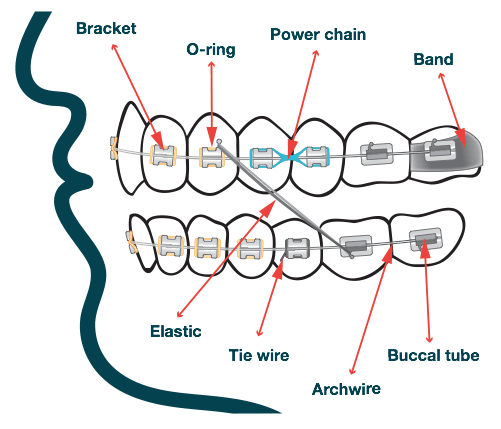
Orthodontic treatment, commonly called as braces treatment, involves correction of misaligned teeth using braces. Apart from aligning teeth, orthodontic treatment helps to restore a person’s bite, the function of their teeth and aesthetics.
In fact, it plays an important role in preventing dental conditions like cavities and gum diseases, that commonly occur in the case of malalignment.
Why Should I Get Braces?
Apart from aesthetics, most people are not really bothered about their crooked teeth. However, little do they know that their misaligned teeth can become a problem for their dental health. Many people wonder – “Why should I get braces? or “Do I need braces?”
Here are a few conditions that need braces:
- Overbite: When your upper front teeth overlap your lower front teeth in excess of 2mm, it is called an overbite and requires orthodontic treatment.
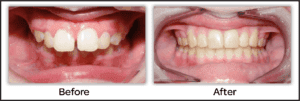
- Crossbite: In an ideal scenario, your upper teeth lie buccally(towards the cheek side) in comparison to your lower teeth. However, in some cases, the lower teeth overlap the upper and this condition is called a crossbite and can be corrected using braces.
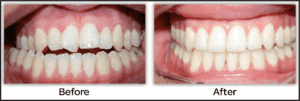
- Open Bite: If your upper teeth fail to overlap your lower teeth, the condition is called an open bite and requires orthodontic correction.
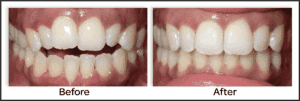
- Misplaced midline: When the center of your upper front teeth does not line up with the center of your lower front teeth.
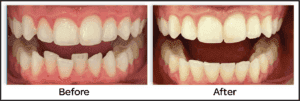
- Spacing:
In ideal cases, adult teeth do not show spaces between them. But, many a time, due to a jaw size- tooth size mismatch or missing teeth, there is an unnatural spacing between teeth that needs orthodontic correction using braces.
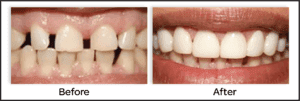
- Crowding:
When there is crowding of teeth, it can cause many dental issues like cavities, food lodgment, gum infections and poor aesthetics. This condition needs to be treated using braces.
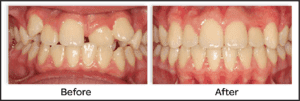
- Forwardly placed teeth:
Due to jaw development issues, it can result in the forwardly placed upper or lower jaw, and subsequently the teeth. If left untreated, this condition can result in many dental issues.
What are the benefits of correct teeth alignment and Braces?
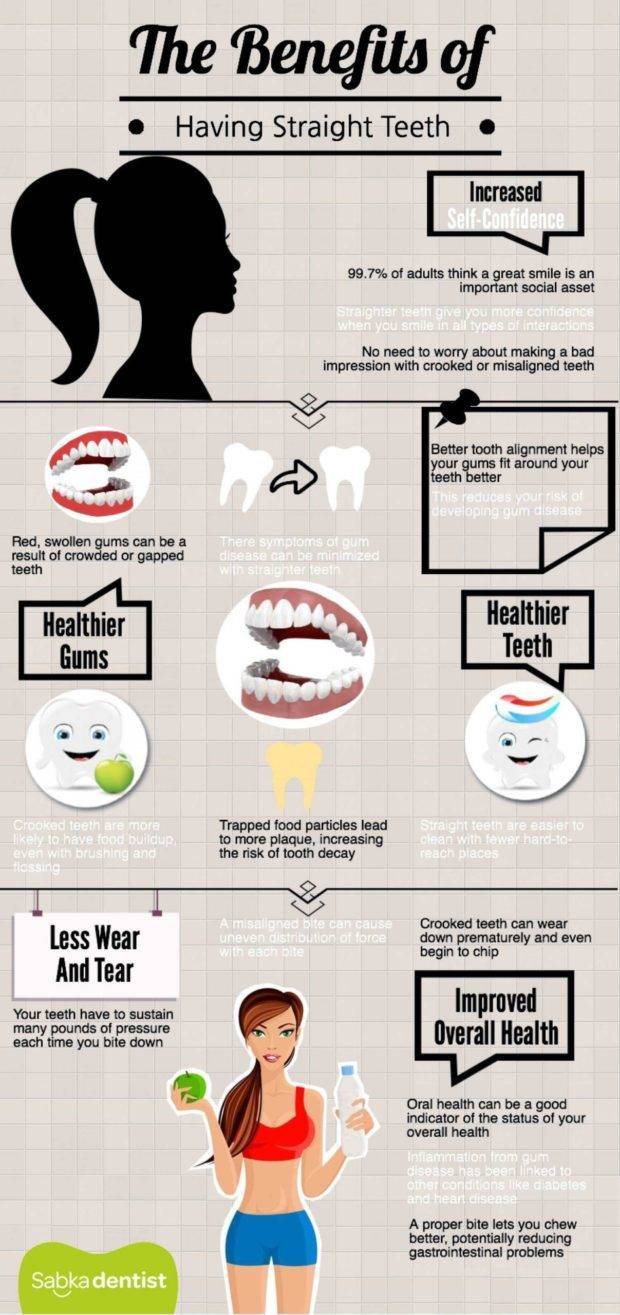
Though we are not naturally born with perfectly aligned teeth, it is possible to get our teeth aligned using braces. But, what are the benefits of getting our teeth aligned?
- Efficient chewing of food
- Improvement of speech
- Improvement in dental hygiene
- Ease of maintaining good oral hygiene
- Reduced risk of cavities and gum diseases
- Reduced attrition or grinding of teeth
- Corrects protrusion of teeth, which are a higher risk of trauma
- Improves smile that helps boost confidence and self-esteem
So, dental braces are not just to improve a person’s smile or provide superior aesthetics but actually help improve oral health as well.
Is the Extraction of Teeth Required for Orthodontic Treatment?
What Should a Detailed Orthodontic Treatment Plan Include?
Orthodontic treatment usually occurs in two phases: Active and Retention. While the active phase of treatment involves the movement of teeth into alignment, the retention phase includes retaining the teeth in their position using a retainer.
Orthodontic treatment can be performed using removal and fixed appliances and sometimes, a combination of the two is also used.
The type and approach of your orthodontic treatment will depend upon your case and the severity of the malocclusion. Each case is treated differently and appropriate appliances are chosen. These appliances are used to cause movement of teeth, refrain muscles and bring about jaw growth.
Special type of appliances are used in kids to direct jaw growth and these are called as myofunctional appliances.
Your orthodontic treatment plan also includes how to handle orthodontic emergencies. Your orthodontist is well-trained to help you manage these concerns throughout your treatment if the case arises.
How Long Does Orthodontic Treatment Take?
One common question that patients ask their orthodontist after getting their braces treatment started is – “When will my braces come off?” and “Can braces be removed early?”
In most cases, orthodontic treatment takes 1.5- 2 years. However, some simple cases take less than a year to complete and the more complex cases can take 3years or longer to complete.
Patients are often excited about removing braces and once the orthodontic treatment is completed, they look forward to flaunting their new smile!
Everyone has the right to a perfect smile and orthodontic treatment using braces is the most natural way to achieve it. At Sabka Dentist clinics, we are motivated to give beautiful smiles to our patients who have multiple options of braces to choose from based on their need and budget!
What happens when the teeth are in the right position?
After the orthodontic treatment is done you will find the teeth in a proper position, but to give it a proper shaping, this is known as the “maintenance” period, and the apparatuses that hold the teeth set up are called retainers.
The retainers hold recently fixed teeth in position while the encompassing gum and bone settles. The retainers can be removable or fixed, contingent upon the first issue.
Sabka dentist provides better orthodontic braces treatment that can sustain for a longer duration. They have qualified Orthodontists that can give better treatment. Come here to get better guidance along with excellent teeth braces treatment.
Visit us today for your smile transformation!
Expert's Opinion
Dr. Rupali Gujar Dental Director of Sabka dentists says “You don’t need to hide or be conscious of your smile anymore and get orthodontic treatment for crooked teeth at Sabka Dentist clinics”.
Dr. Ankita Gada Dental Director of Sabka dentist says “Getting orthodontic treatment helps to improve one’s smile and gives them confidence and boosts self esteem”.
Dr. Manan Dhulia dental Director of Sabka dentist says “Teeth alignment using braces helps to maintain better oral hygiene and prevents cavities and gum infections”.
Frequently Asked Questions
How long will it take for braces to straighten my teeth?
The length of orthodontic treatment for a patient is determined by multiple factors, which includes the severity of malocclusion, age, health of teeth, biologic response, etc. Nevertheless, typical orthodontic treatment takes between 12 and 36 months.
Are braces painful?
Dental braces are not painful. In most cases, there might be mild discomfort after the orthodontic wire is engaged into the brackets.
What should you avoid with braces?
With braces fixed on the teeth, one should avoid eating food that has sticky consistency or is hard enough as it can lead to the breaking of the brackets and thus delay the total treatment time.
What happens if I am not regular in my braces appointment?
If you are irregular in your appointments, then the intended time period for the completion of the treatment will be prolonged and the teeth movement will be affected.
Is it okay to get braces at age of 30?
There is no age limit for getting teeth braces done. The only consideration is that the teeth should be periodontally sound.
Can you stop Orthodontic Treatment midway?
What is the purpose of retainers after having braces?
Retention phase follows orthodontic treatment. Orthodontic retainers are custom-made devices that are usually made of wires and acrylic. Their aim is to hold teeth in their new position. Once the orthodontic treatment has been completed, there will remain a risk of relapse i.e. the tendency of teeth to return to their original position.
Relapse can occur due to multiple factors, which includes recoil of periodontal fibers, pressure from surrounding soft tissues, the occlusion and patient’s continued growth (as seen in adolescents).
By using retainers to hold the teeth in their new position for certain length of time, the surrounding periodontal fibers are able to adapt to changes in the bone which will minimize any changes to the final tooth position after the completion of orthodontic treatment.
Removable retainers are only required to be worn part-time, while fixed retainers consist of passive wire bonded permanently to the lingual surface (tongue side) of incisors.
Is Invisible Braces better than braces?
Following are the advantages of Invisible Braces over Braces:
- Removable: With Invisible Braces, the trays can be removed, allowing you to eat and drink without food getting stuck in braces.
- Aesthetic: Clear trays may not even be noticed when the patient is wearing them.
- Comfort: Aligner trays can be more comfortable as there are no brackets involved that can otherwise create sores.
- Cleaning: It is easier to keep the Invisible Braces trays cleaner than braces.
What are the different types of braces?
There are different types of braces, and their costs vary accordingly.
Here are different types of braces:
1. Metal braces
Metal braces are traditional types of braces that are used for many years for treating teeth misalignment. Here, metalling brackets and the archwires of metal braces are detected when the mouth is open. Compared to other braces, they have the lowest cost for the treatment.
- Lingual braces – These braces are made of metal and are attached from the backside surface of the teeth. This makes it difficult for any person to detect the lingual braces. Lingual braces cost a little higher than metal and ceramic braces and lower than the aligners.
2. Ceramic braces
Ceramic braces are made up of ceramic material, Which resembles the same colour as the teeth. This makes it difficult to detect these braces. The ceramic braces cost is a little higher than metal braces and lower than other types of braces.
3. SDalign [aligners]
SD align is the custom-made aligners that do the teeth alignment properly. These are invisible teeth braces and are transparent and can be easily removed when needed. These transparent braces have the highest braces treatment cost.
These are different types of braces used for treating teeth misalignment. The teeth braces price in India also varies as per the service provider’s credibility and the location.
About Author

Dr. Reena is a graduate of Maharashtra University of Health Sciences with a Bachelor in Dental Surgery. Dr. Reena Waghela is a leading dental surgeon having over twelve years of experience, with a special focus on advanced dental care. She is trained in Implant Dentistry, Aesthetics, and Full Mouth Rehabilitation. She picked up the finer nuances of Dental Practice Management while assisting leading dental surgeons during her time in the USA.



